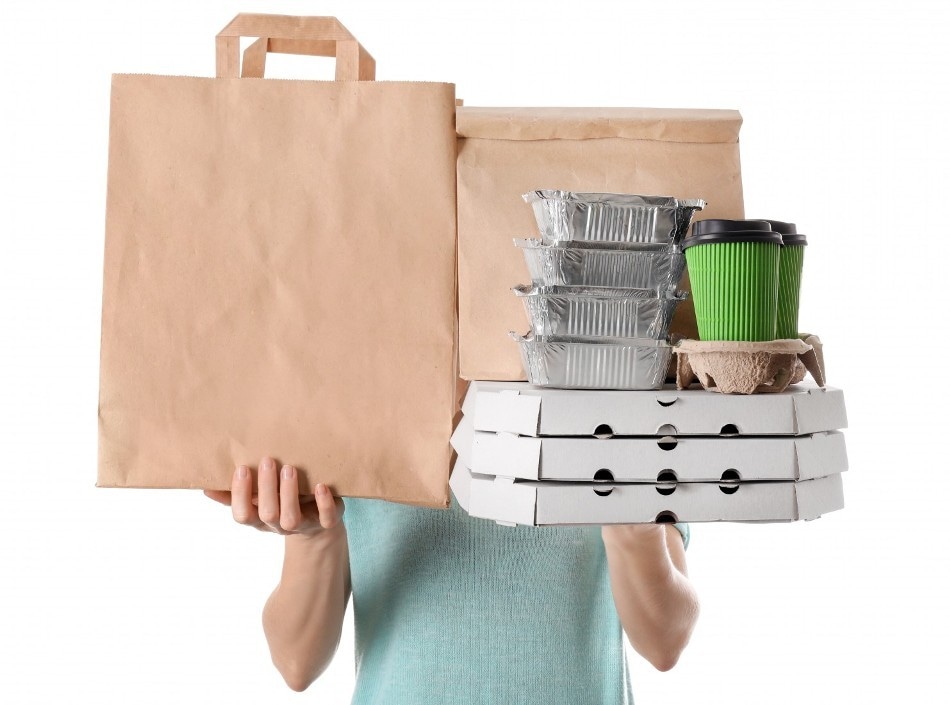Dec 19 2018
According to researchers, more must be done to deal with the growing environmental effect of takeaway food containers.
 Image credit: University of Manchester
Image credit: University of Manchester
Based on a new study, it is estimated that 2025 million takeaway containers are being used every year in the European Union (EU) alone. Furthermore, it reveals that discovering a means to recycle disposable takeaway containers could help minimize equivalent greenhouse gas emissions generated by 55,000 cars every year.
The scientists, from The University of Manchester’s School of Chemical Engineering and Analytical Science, have conducted the first-ever extensive study of the environmental effects of disposable, takeaway food containers. They examined polystyrene (styrofoam), polypropylene (clear plastic), and aluminum containers. A comparison was made between these containers and reusable plastic containers, such as “Tupperware.”
For instance, in the research, it was found that although Styrofoam containers have the least carbon footprint—50% lower compared to aluminum containers and three times lower than their plastic equivalents—they cannot be regarded as a sustainable packaging because they are not recycled at a large scale and usually end up in landfill.
There has been a rapid growth in the global takeaway food market, with an estimated value of more than £80 billion in 2020. A huge amount of disposable takeaway containers is used by the sector, predicted by this study to be 2025 million units per year in the European Union (EU) alone.
However, the level of the effects of takeaway food containers used in this growing sector on the environment was not quantified so far.
As part of the study, life cycle assessment (LCA) was used to predict the effects of containers, keeping in mind their manufacture, use, and end-of-life waste management. On the whole, the researchers examined 12 different environmental impacts, such as depletion of natural resources, climate change, and marine ecotoxicity.
As consumers, we can play a significant role in reducing the environmental impacts of food packaging by reusing food containers as long as possible. Our study shows clearly that the longer we reuse them, the lower their impacts become over their extended lifetimes.
Professor Adisa Azapagic, Project Leader, The University of Manchester
In the study, it was found that the styrofoam container was the ideal choice of all the disposable containers when taking into account all the impacts, including the carbon footprint. For instance, the styrofoam container had a 50% lower carbon footprint when compared to aluminum and three times lower when compared to the plastic. This is due to the fact that the amount of energy and materials used in the synthesis of styrofoam is lower than the other two types of container.
However, at present, styrofoam containers are not recycled and cannot be regarded as a sustainable packaging option. According to the study, it is predicted that recycling half of the containers used at present, as estimated by the EU recycling policy for the year 2025, would decrease their carbon footprint by one-third. This would save 61,700 tCO2 equivalent per year at the EU level, equivalent to the greenhouse gas emissions produced by 55,000 cars every year. The majority of other impacts would be mitigated by over 20%.
Achieving this level of recycling of styrofoam containers is going to be challenging. Although technically possible and practiced at small scale in some countries, the main difficulties are related to collecting the used containers and the associated costs.
Dr Alejandro Gallego-Schmid, Study Lead Author, The University of Manchester
Because they are so light, the styrofoam containers can easily be blown away, contributing to urban and marine litter. So, despite their lower life-cycle environmental impacts relative to the other containers, styrofoam containers cannot be considered a sustainable packaging option unless they can be recycled at a large scale.
Dr Joan Fernandez Mendoza, The University of Manchester
Additionally, the study found that the carbon footprint of reusable Tupperware containers was lower compared to disposable styrofoam when they were reused more than 18 times. This is regardless of the water and energy used to clean them. Disposable clear-plastic containers had to be reused even fewer times—just five—to become better for the carbon footprint than the styrofoam.
As consumers, we can play a significant role in reducing the environmental impacts of food packaging by reusing food containers as long as possible. Our study shows clearly that the longer we reuse them, the lower their impacts become over their extended lifetimes.
Professor Adisa Azapagic, Project Leader, The University of Manchester